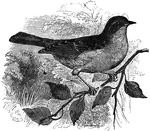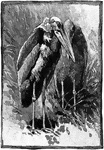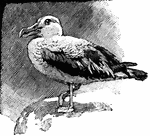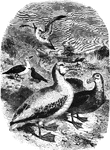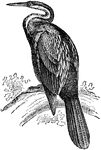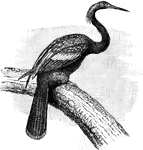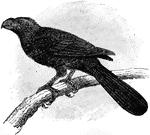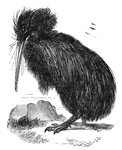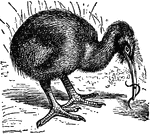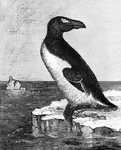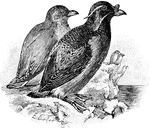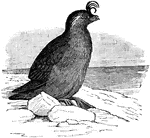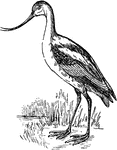179 illustrations of birds including: accentor, adjutant, agami, albatross, alectrurus, anhinga, ani, apterynx, araçarl, auk, avocet, baloeniceps, barbet, batara, bee-eater, bird of paradise, bittern, blackbird, bluebird, boatbill, boblink, bowerbird, bulbul, bunting, bustard, butcher-bird, and buzzard

Adjutant
An adjutant is a very large species of stork, a native to India, also called the gigantic crane. It…

Agami
"A grallatorial bird, a native of South America, often called the golden-breasted trumpeter."-Whitney,…
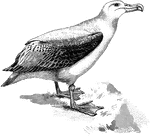
Wandering Albatros
"The Wandering Albatros of the Southern Oceans is white with narrow dusky undulations above and almost…
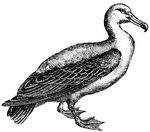
Albatross
The Albatross is the largest and most bulky of all the birds which fly over the surface of the sea.
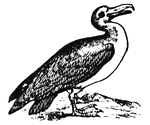
Albatross
A large marine swimming bird. The bill is straight and strong, the upper mandible hooked at the point…
Albatross
Albatrosses are amongst the largest of flying birds, they are highly eficient in the air, using dynamic…

Sooty Albatross
"Phoibetria fuliginosa. Sooty Albatross. Plumage ordinarily uniform sooty-brown; quills and tail blackish…

Wandering Albatross
The wandering albatross (Diomedea exulans) is a seabird with the largest wingspan of any living bird.
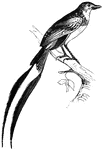
Tricolored Alectrurus
Native to South America, the tricolored alectrurus measures only six inches in length.
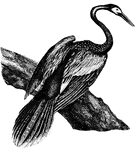
Anhinga
The head of the anhinga is slender and cylindrical, on a slim and excessively long neck, which makes…
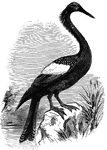
Anhinga
Also known as the snake-bird, the anhinga inhabits the freshwater areas of the South Atlantic States;…
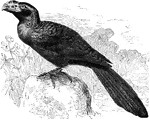
Smooth-billed Ani
"Crotophaga ani. Smooth-billed Ani. Black Witch. Savanna Blackbird. Bill smooth or with a few transverse;…
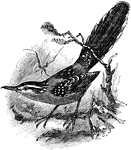
Ferruginous Antbird
The Ferruginous Antbird (Drymophila ferruginea) is a bird in the Thamnophilidae family of antbirds.…
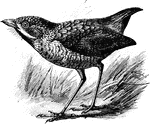
Antpitta
"Grallaria rex. GRALLARIA. A genus of formicarian passerine birds, a leading group of South American…
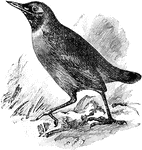
Black-Faced Antthrush
The Black-Faced Antthrush (Formicarius analis) is a bird in the Formicariidae family of ground antbirds.…
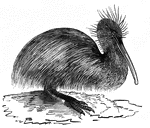
Apteryx
The Apteryx is characterized by the rudimentary condition of the wings, which are useless as organs…
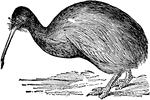
Apteryx
"Apteryx is a genus of birds, the typical one of the family apterygidæ. Two species are known-…

Curl-Crested Aracari
"The Curl-Crested Aracari is deserving of notice on account of its beautiful, variegated plumage."

Humboldt's Araçarl
A native of Brazil, Humboldt's araçarl averages approximately seventeen inches in length
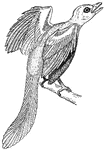
Archaeopteryx
Archaeopteryx, sometimes referred to by its German name Urvogel ("original bird" or "first bird"), is…
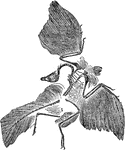
Archaeopteryx Fossil
An illustration of the skeletal fossil of Archaeopteryx, the earliest and most primitive bird known.…
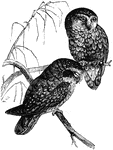
Athene Maculta
Athene maculta, which derive their name from the Greek goddess of wisdom, supposedly for their meditative…

Auk
"Once common off the coast of Scotland, but a present scarce in arctic seas. It resembles the penguin…

Horn-billed Auk in Summer
"Ceratorhina monocerata. Unicorn Auk. Horn-bill Auk. Adults in summer: Bill orange-yellow. Culmen and…

Horn-billed Auk in Winter
"Ceratorhina monocerata. Unicorn Auk. Horn-bill Auk. In winter: Bill orange-yellow. Culmen and base…
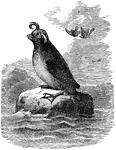
Crested Auk
"Simorhynchus cristatellus. Crested Auk. Snub-nosed Auk. The whole plumage otherwise sooty - more brownish-black…
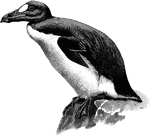
Great Auk
"This species (Alca impennis or Great Auk), extirpated chiefly by the persecution of fisherman, but…

Great Auk
"Alca Impennis. The Great Auk. A great white oval spot between eye and bill. Hood and mantle dark; under…
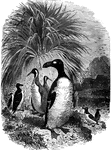
Great auk, razor-bills, and puffins
A scene depicting a great auk, as well as razor-bills and puffins. The great auk is now extinct.

Parroquet Auk
"Simorhynchus psittaculus. Parroquet Auk. Pug-nosed Auk. Adult in summer with the nasal saddle, moulted…

Razorbill Auk
A brd characterized by its bill. The bill is feathered for about half its length, in the rest of its…
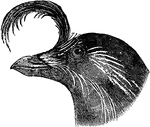
Whiskered Auk
"Simorhynchus pygmaeus. Whiskered Auk. Red-nosed Auk. Bill (dry) orange-red, more salmon color or yellow…

Young Horn-billed Auk
"Ceratorhina monocerata. Unicorn Auk. Horn-bill Auk. Young: Bill like that of adults in winter, lacking…

Young Whiskered Auk
"Simorhynchus pygmaeus. Whiskered Auk. Red-nosed Auk. Bill very small and weak, much compressed. No…

Auks and Cormorants
" A needle rock tenanted by Cormorants, Auks, etc." Elliot Coues, 1884 The rock is protruding from the…

Least Auks
"Simorhynchus pusillus. Least Auk. Knob-nosed Auk. Bill small and simple, but stout for its length,…
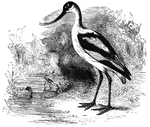
Avocet
The avocet averages about eighteen inches in length, feeding on worms, aquatic insects, and thin-skinned…
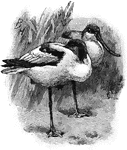
Avocet
A wader bird native to warm and hot climates. Commonly 15 to 18 inches tall and has a chestnut color…
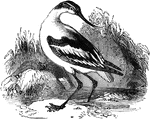
Pied Avocet
The Pied Avocet (Recurvirostra avosetta) is a large wader in the avocet and stilt family, Recurvirostridae…
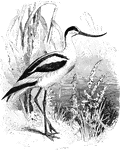
Avocets
"Recurvirostra. Avocets. Bell slender, more or less recurved, then the upper mandible hooked at the…
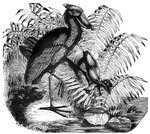
Balœniceps
About three feet, nine inches in height, the balœniceps is native along the banks of the White…
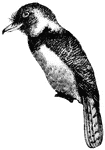
Barbet
Cuckoos have elegant shapes; beaks almost as long as the head, compressed, and slightly curved; the…
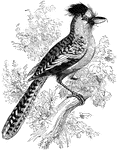
Batara
Taking its name from the Azara people of South America, the batara is the largest of the shrikes.

